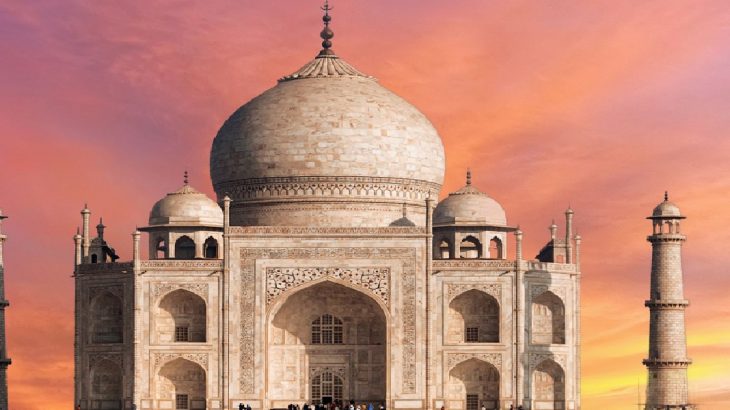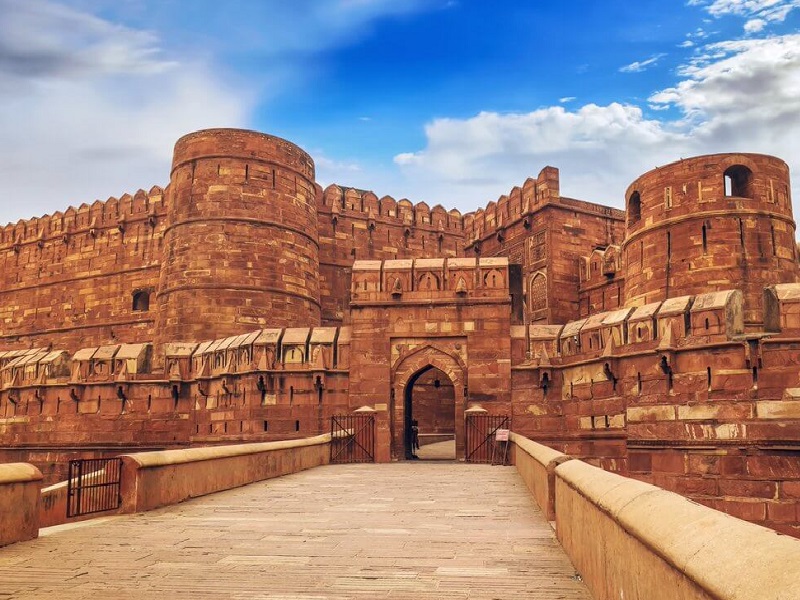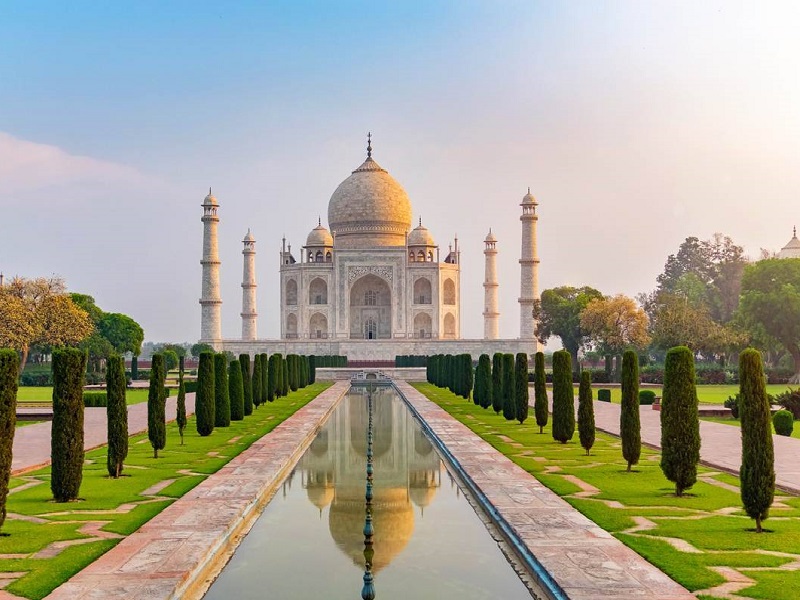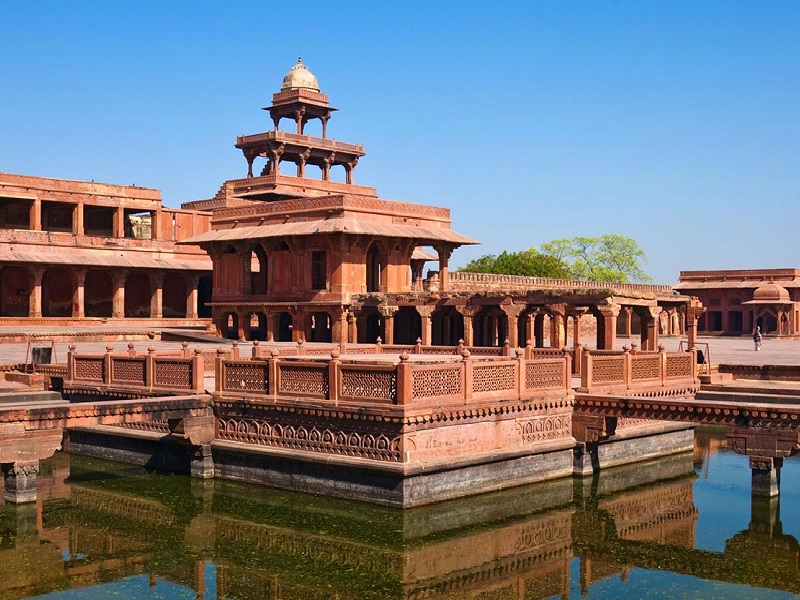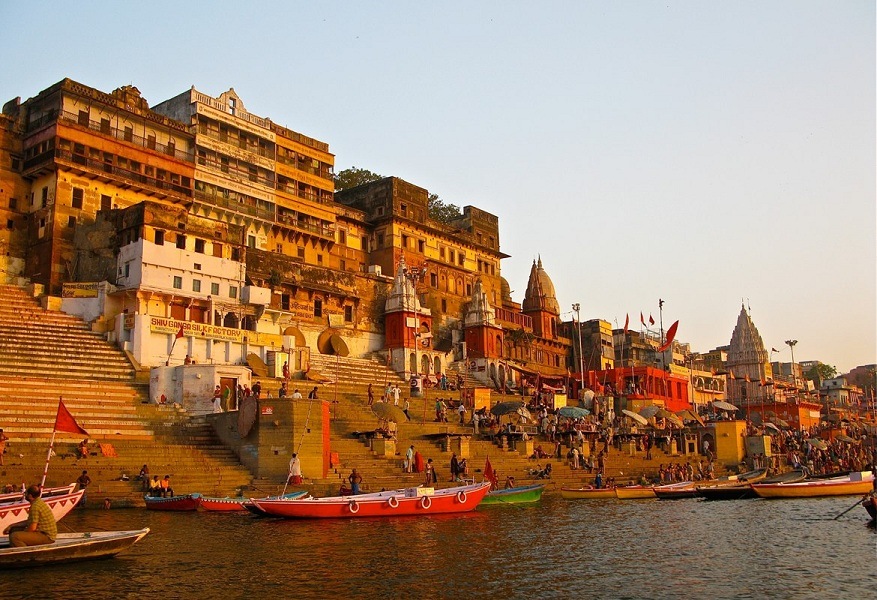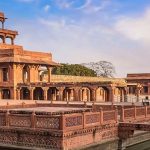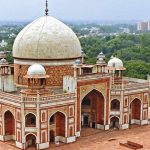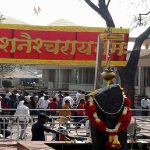Home to the Taj Mahal, one of the Seven Wonders of the World, Uttar Pradesh is a bountiful and utterly religious state in India. It is home to some of the most beautiful monuments, ancient Hindu temples on the bank of meandering rivers, and cultural sights in India. Tourism in Uttar Pradesh provides an opportunity to explore the cultural, historical, and natural aspects in one place. Besides, the state of Uttar Pradesh is well known for its UNESCO world heritage sites that are popular throughout the world. Interestingly, they are all located around the city of Agra. Here is the list of UNESCO World Heritage Sites in Uttar Pradesh ensure to visit them as part of India Tour Packages.
Agra Fort
Situated on the banks of the Yamuna River, Agra Fort, also known as the Lal Qila or Red Fort, is one of the popular places to visit in Agra. It was originally a brick fort known as Badalgarh, held by Raja Badal Singh, a Hindu Rajput king (1475 AD), and was reconstructed by the third Mughal emperor Akbar on the remains of Badalgarh in 1555 CE. It was declared a UNESCO World Heritage Site in 1983. Spread over a gigantic area of 3, 80,000 sq. m, this semi-circular fort is surrounded by a 70 feet high fortification wall. Shish Mahal, Khaas Mahal, Diwan-i-Khas, Diwan-i-Aam, Moti Masjid, and Nagina Masjid are the top attractionsa inside the fort of Agra, among the best places to visit near Delhi. One can also attend the sound and light show in the evening that recreates the history of Agra Fort that attracts many tourists, especially history buffs.
Book Here : Agra Tour Packages
Taj Mahal
Located on the southern bank of the Yamuna River in Agra, Taj Mahal is one of the most popular tourist destinations in the world, and among the must-include places in Uttar Pradesh tour packages. It is the face of Agra Tourism, and among the must-visit heritage sites near Delhi. It is an immense mausoleum of white marble, built between 1632 and 1653 by order of the Mughal emperor Shah Jahan in memory of his favorite wife Mumtaz Begum. Declared as a World Heritage Site by UNESCO in 1983, it is one of the most admired Mughal masterpieces in the world and it represents the Indian, Persian and Islamic styles of architecture. The interior chamber of the Taj Mahal is an octagon, which is decorated in lapidary work of precious and semiprecious gemstones. The exteriors of the Taj Mahal are decorated by paint, stucco, stone carvings. The most striking feature of this tomb is the marble dome, which is often called an onion dome. Decorated with a lotus design, the top of this tomb features a gilded finial, which is topped by a moon. Besides, it is counted among the seven wonders of the modern world that attracts around four million visitors annually.
Book Here : Golden Triangle Tour Packages
Fatehpur Sikri
Fatehpur Sikri is a deserted fort city in the Agra district of Uttar Pradesh, India. It is one of the best places of heritage in India and among the popular places to visit near Agra as part of Uttar Pradesh packages. Akbar, the greatest Mughal Emperor, was commissioned Fatehpur Sikri in 1569 AD. The city was constructed to honor the Sufi saint, Sheikh Salim Chisti, who used to live in a cavern on the ridge at Sikri. This city served as the capital of the Mughal Empire from 1571 to 1585 AD. UNESCO declared this complex a World Heritage Site in 1986. Fatehpur Sikri is one of the best-preserved collections of Indian Mughal architecture. Built with an amalgamation of Indian, Persian, and Islamic architecture, the city is bounded on three sides by a 6 km long wall, which is fortified by towers and has seven gates. It consists of beautiful palaces, halls, and mosques. Jama masjid, Buland Darwaza, tomb of Sheikh Salim Chisti, Khas Mahal, Panch Mahal, Khwabgah, Diwan-i-Khas, Anup Talao and Diwan-i-Am are the popular places to visit in Fatehpur Sikri.
Book Here : Fatehpur Sikri Tour Packages
Ancient Buddhist Site Sarnath (Tentative)
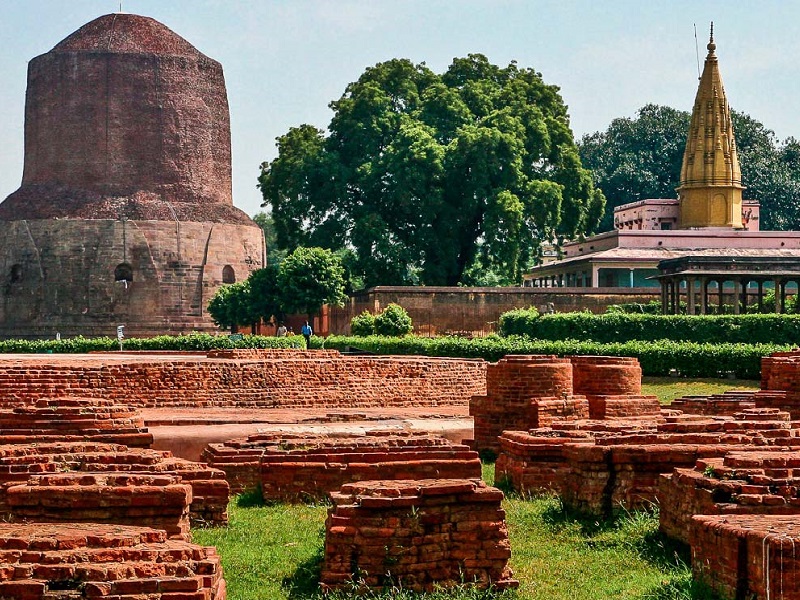
Situated at the confluence of the Ganga and Varuna Rivers, Sarnath is a revered Buddhist pilgrimage center located in the Varanasi district of Uttar Pradesh. Also known as Ishipatna, and Mrigadaya, Sarnath is one of the four most important Buddhist pilgrimage centers of India, the other three being Lumbini, Bodh Gaya, and Kushinagar. Among the top places to visit near Patna, Sarnath is the place where Buddha delivered his first sermon to his five disciples after attaining enlightenment at Bodh Gaya. This ancient Buddhist site is in the UNESCO tentative list since 1988 which comprises two groups of monuments. Under Group ‘A’ Chaukhandi Stupa and Group ‘B consists of all other monuments at the sites i.e. Stupas, monasteries, temples, etc. Dhamek Stupa, the Chaukhandi Stupa, Ashoka Pillar, Mulagandha Kuti Vihar, Deer Park, Archaeological Museum, Tibetan Temple, Thai Monastery, Japanese Temple, and Chinese Temple are some of the prominent places to visit in Sarnath.
Book Here : Sarnath Tour Packages
Iconic Riverfront of the Historic City of Varanasi (Tentative)
The holy city of Varanasi is one of the most ancient continuously living cities in the world, and among the prominent heritage sites near Patna. With an abundance of iconic ghats, temples, and religious and cultural traditions, Varanasi is one of the highest embodiments of Indian culture and spirituality, and the ghats are the epitome of the traditions attached. Owing to the immense sacred value associated with River Ganga in the Indian context, the ghats have been added to the tentative list of UNESCO World Heritage sites in 2021. The 6.5 km long riverfront of River Ganga possesses a unique history and presents a specific vision of a magnificent architectural row of lofty buildings and temples thus the ghats are inextricably linked to the structures above them. Though there are 84 ghats in total, Assi Ghat, Dashashvamedha Ghat, Manikarnika Ghat, Panchaganga Ghat, and Adi Keshava Ghat are the most prominent places to visit in Varanasi as they are the place of numerous activities of the Banarasi culture ranging from the everyday uses to spiritual elements including immersion, rituals, festivals, and cremation.
Book Here : Varanasi Tour Packages
Iconic Saree Weaving Clusters of India
The Saree or sari is undoubtedly distinguishable as the Indian woman’s traditional attire and is essentially a valuable Indian contribution to the world’s cultural heritage and diversity. Traced to the Vedic civilization, the saree survives as a living traditional clothing, and it has no parallels in terms of versatility, the richness of color, texture, and variety of weaving techniques using different kinds of yarn, including cotton, silk, gold and silver thread. The houses of craftsmen are an example of vernacular architecture, where the architecture has evolved over a large period. UNESCO added eight clusters where sari weaving in 2014 in the tentative list that includes Chanderi in Madhya Pradesh, Banaras or Varanasi & Feeder town Mubarakpur in Uttar Pradesh, Paithon & Yeola in Maharashtra, Koyyalagudem & Pochampalli in Andhra Pradesh, and Sualkuchi, Assam. Among the best places to visit near Kanpur, Banaras is home to the iconic brocade saree. Weavers comprise almost 25 percent of Banaras city’s population, who trace their presence in the city between three hundred and a thousand years. European and Indian royalty patronized the craft of Banarasi saree, and it flourished, absorbing influences from Islamic traditions and Hindu lore.
Also Visit : Heritage Sites near Kanpur
